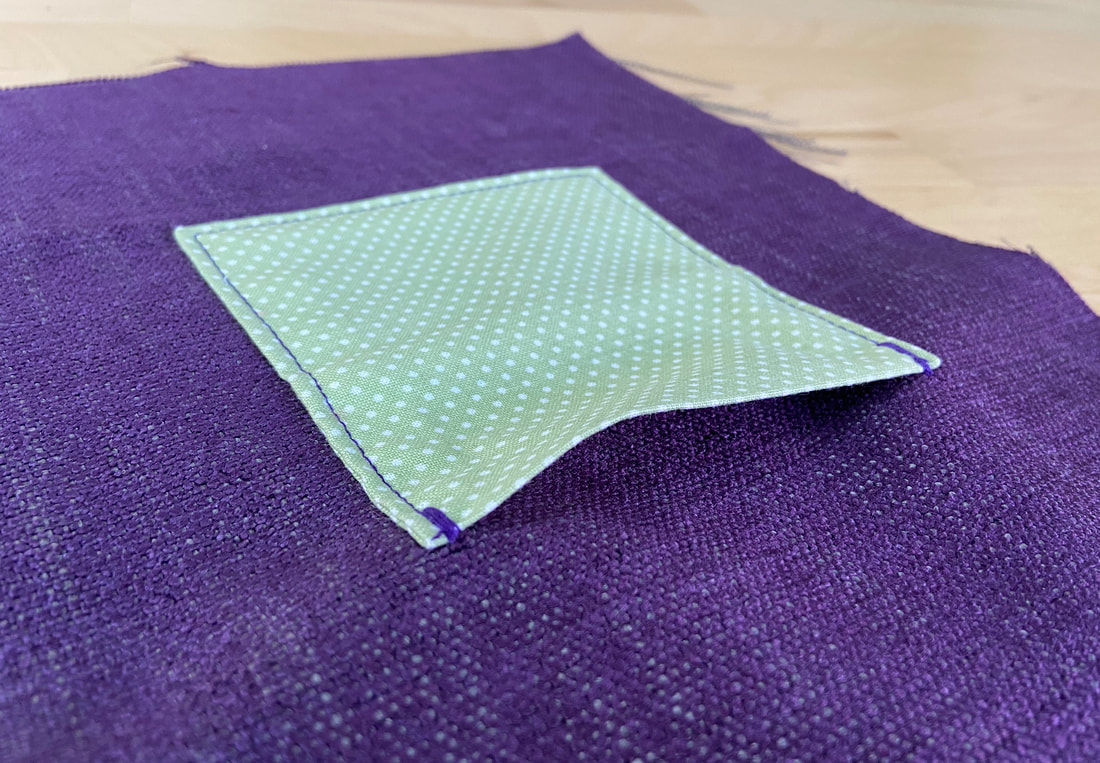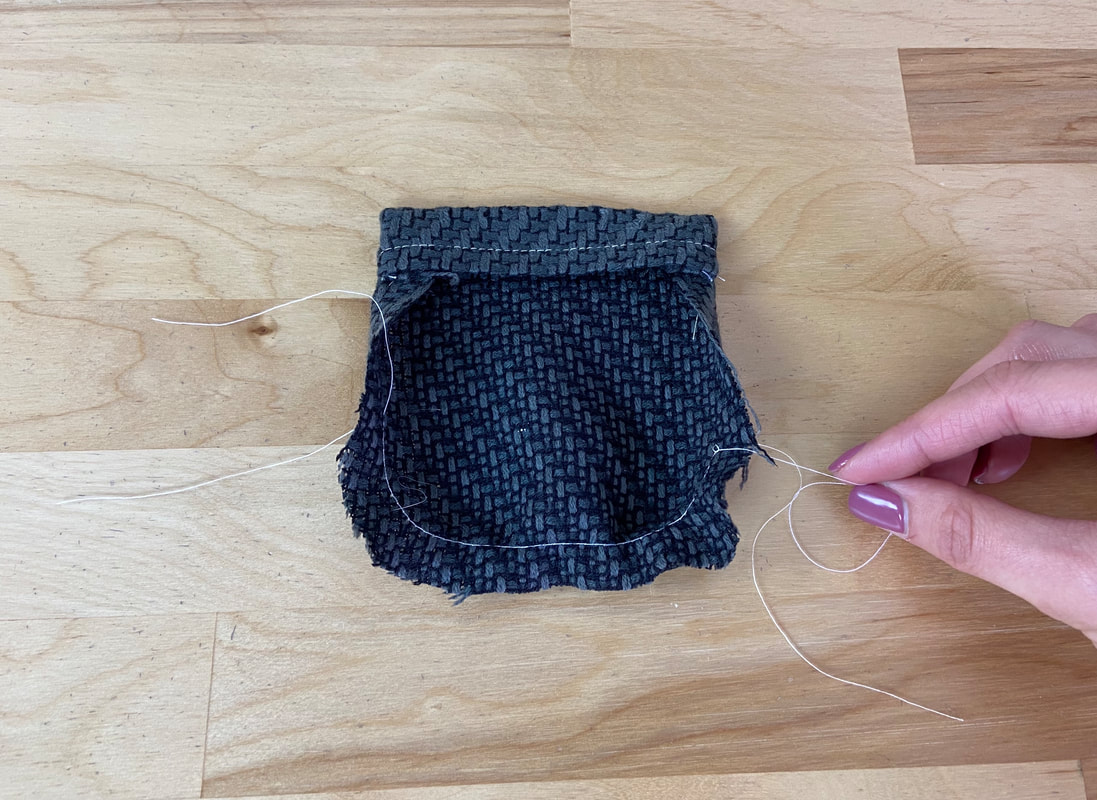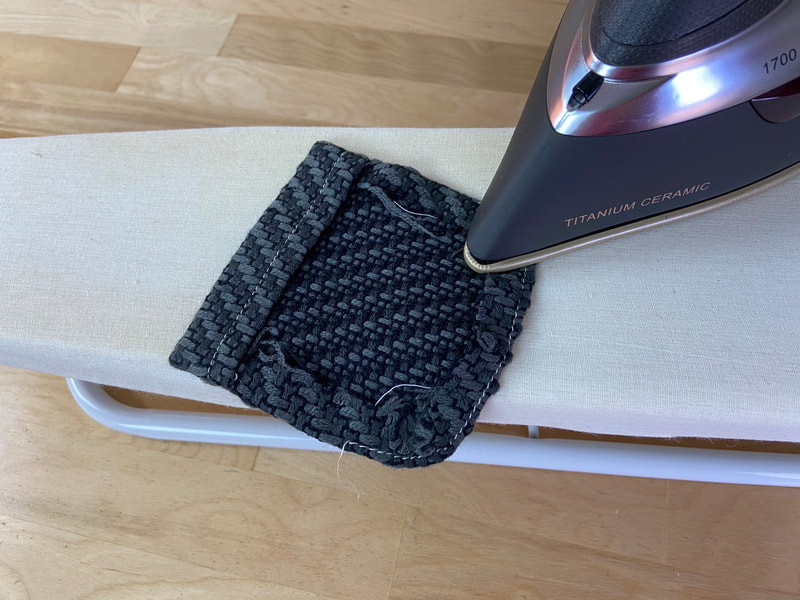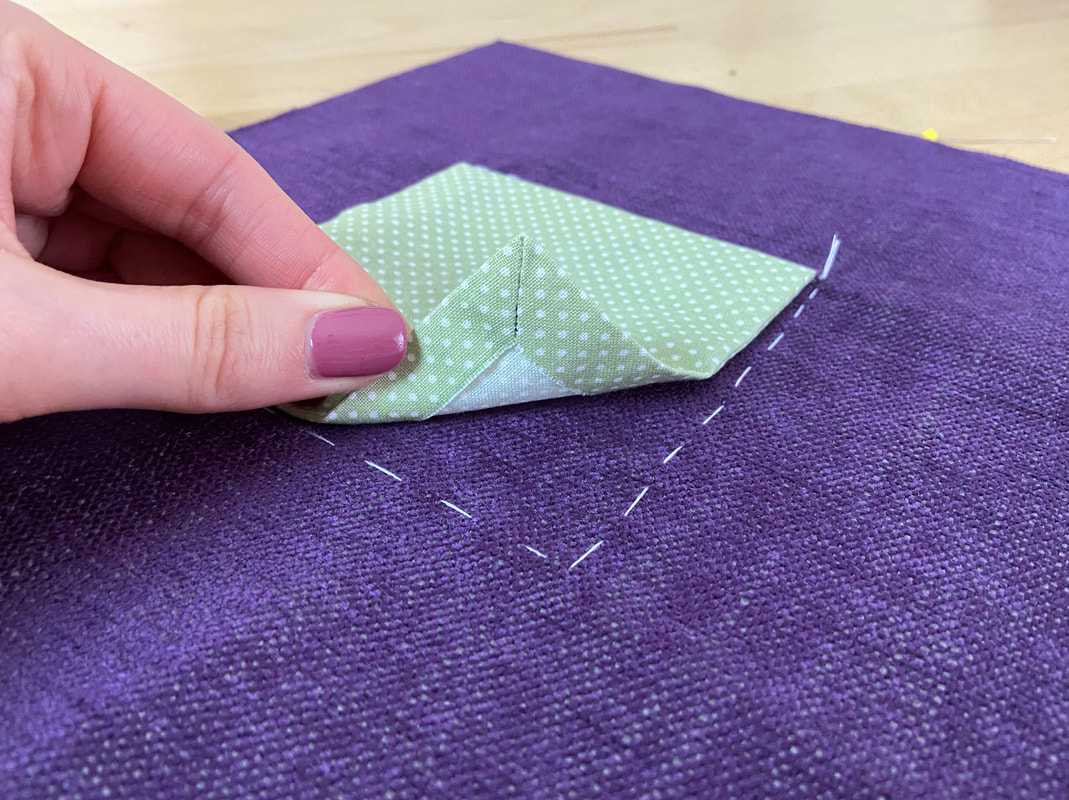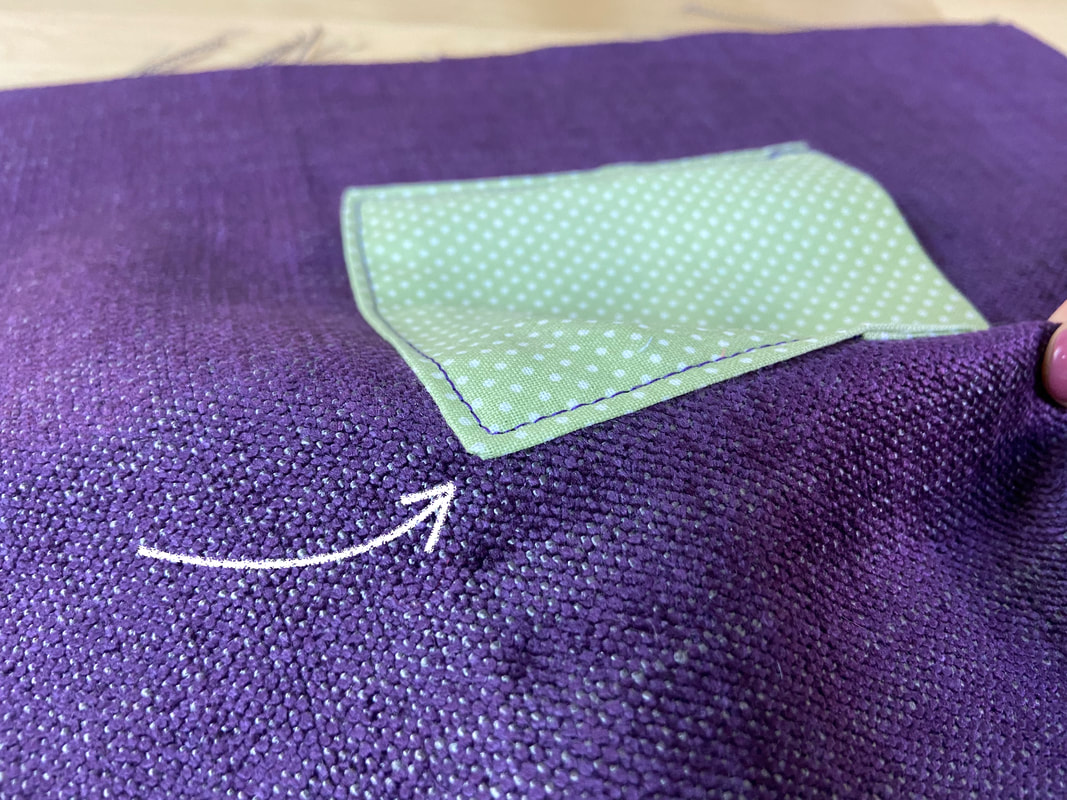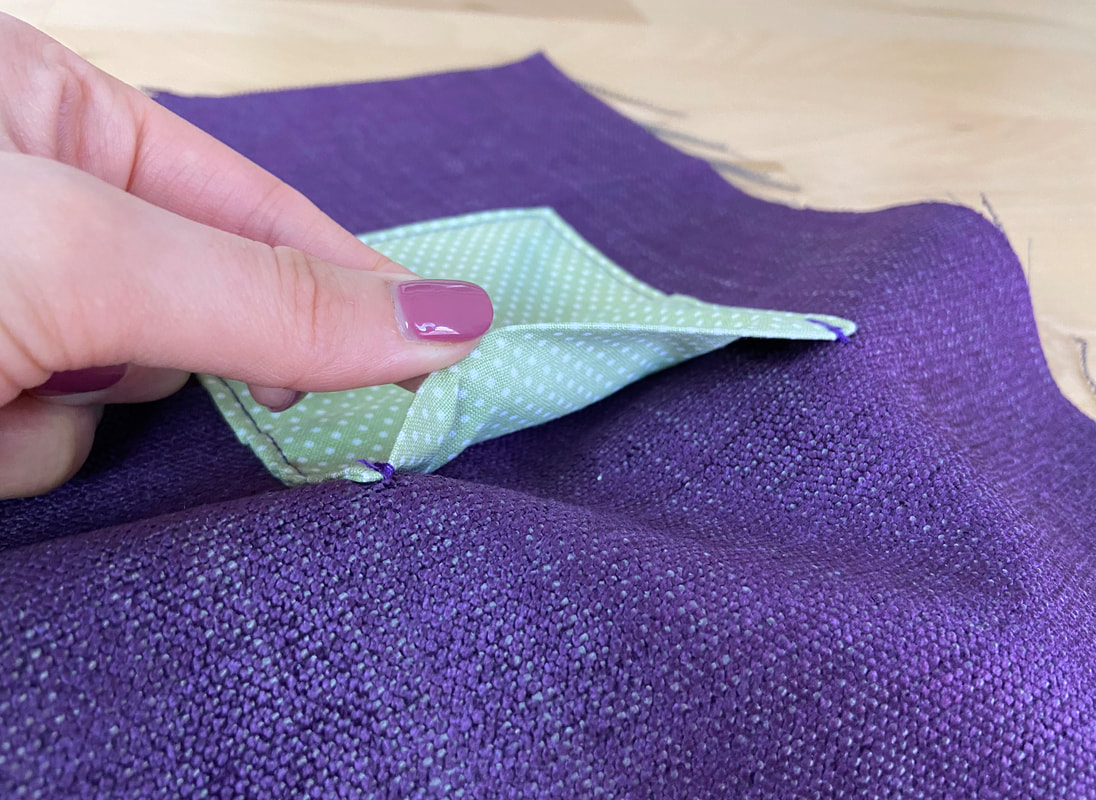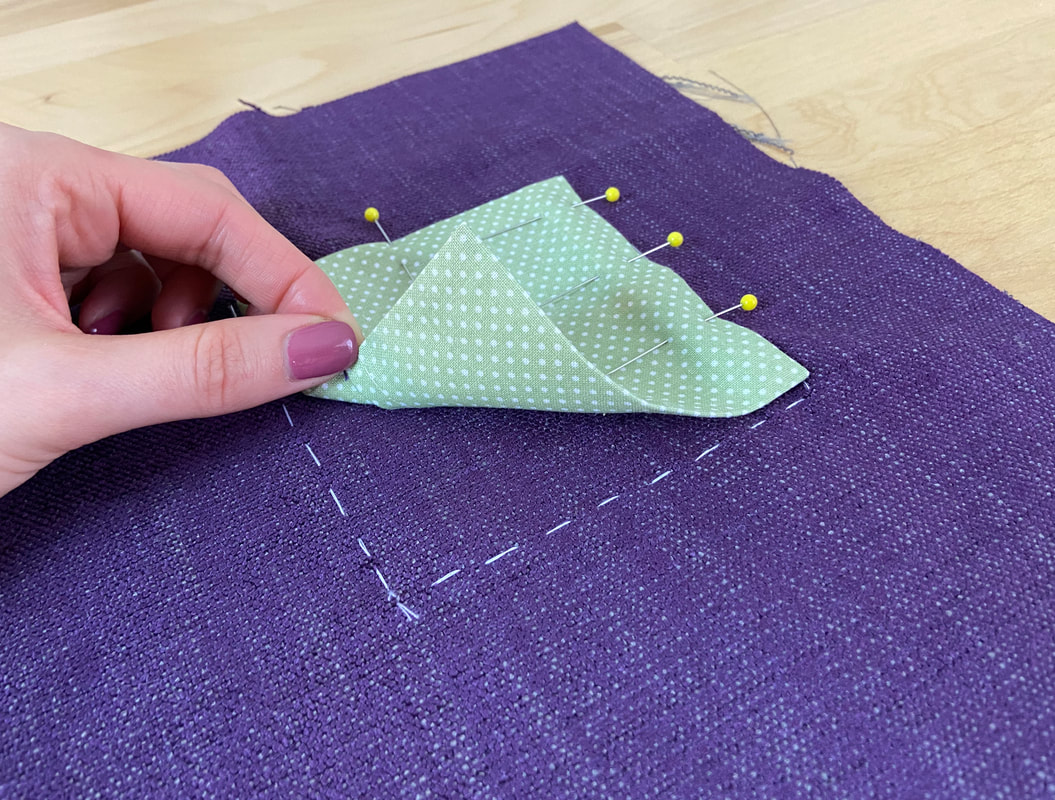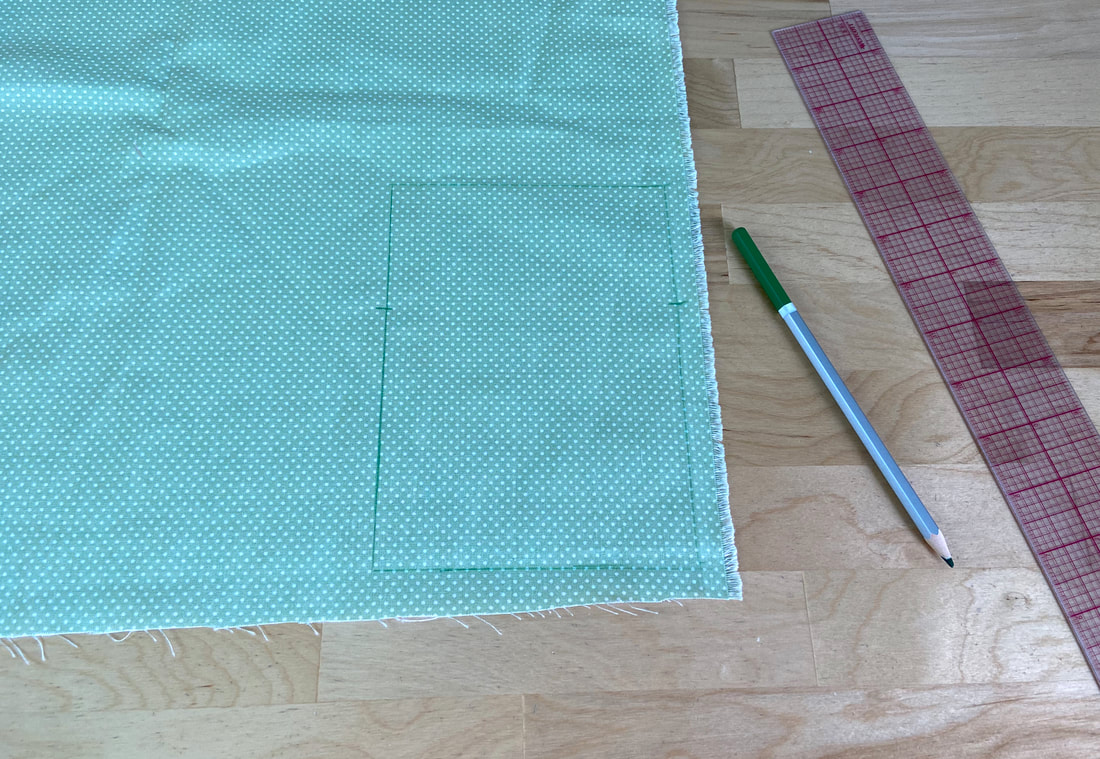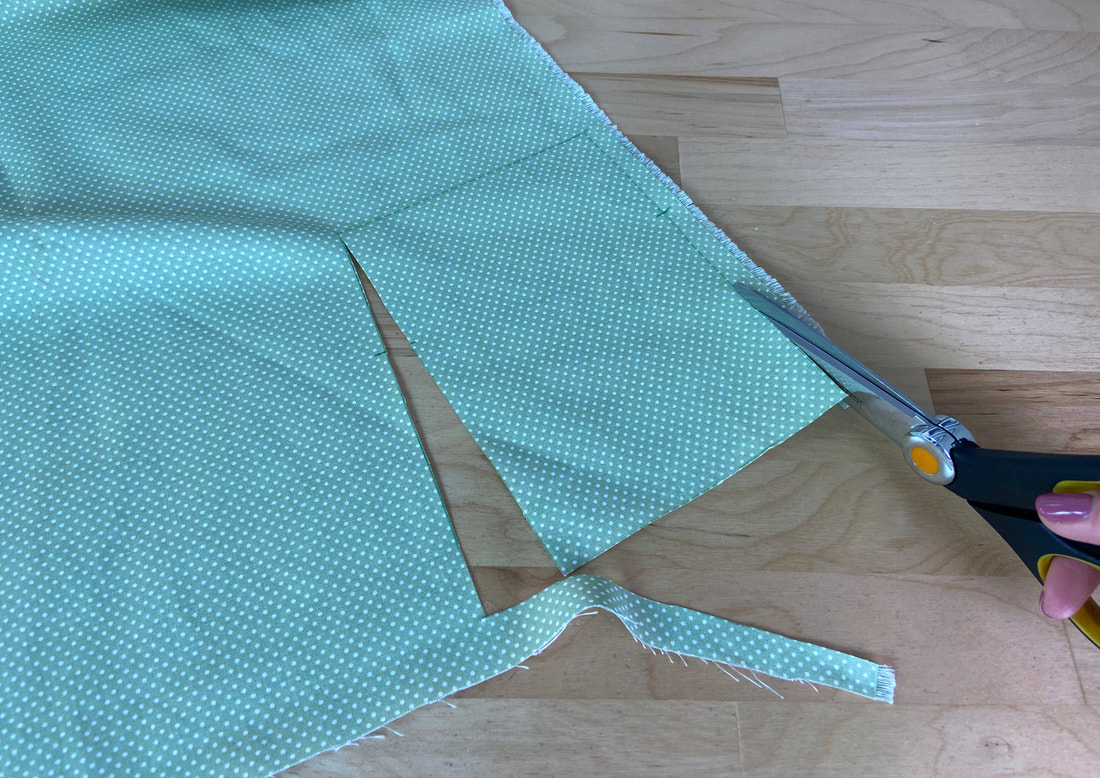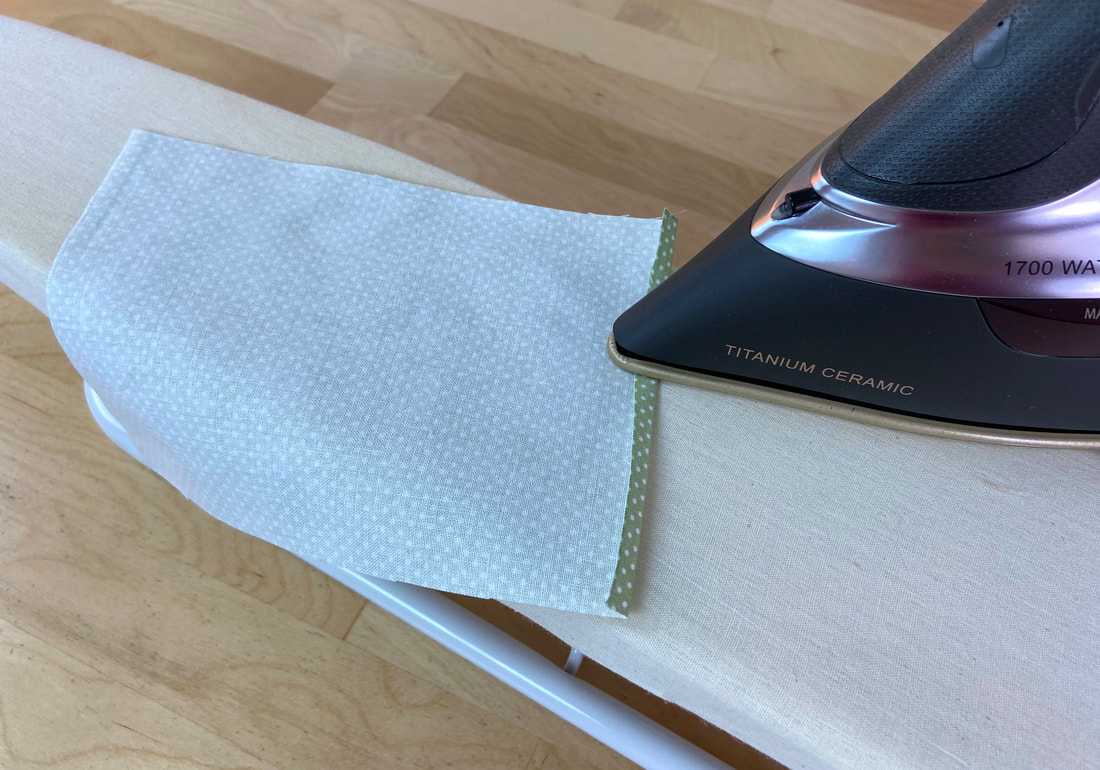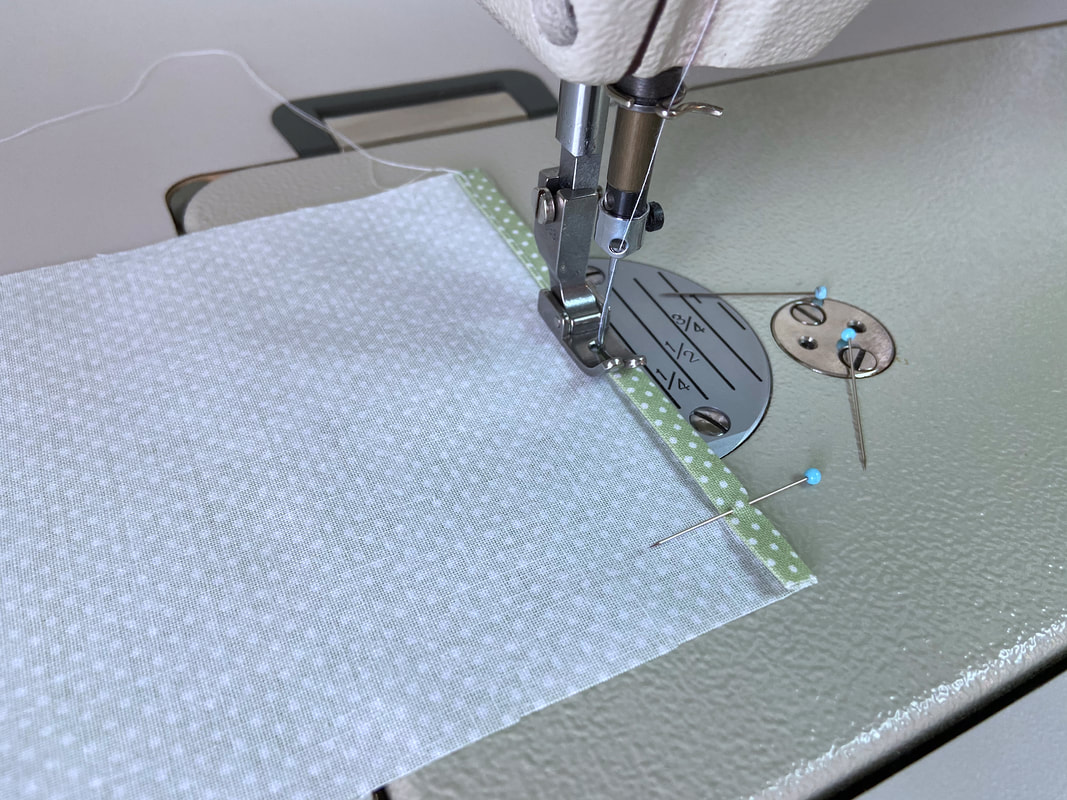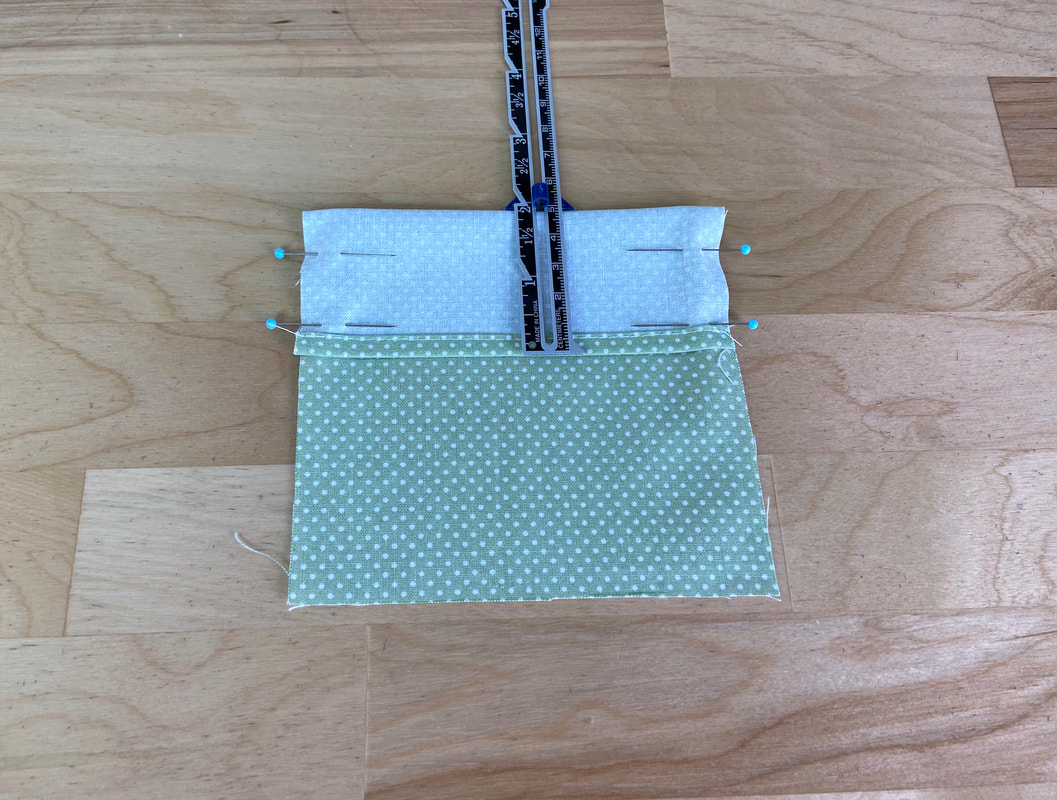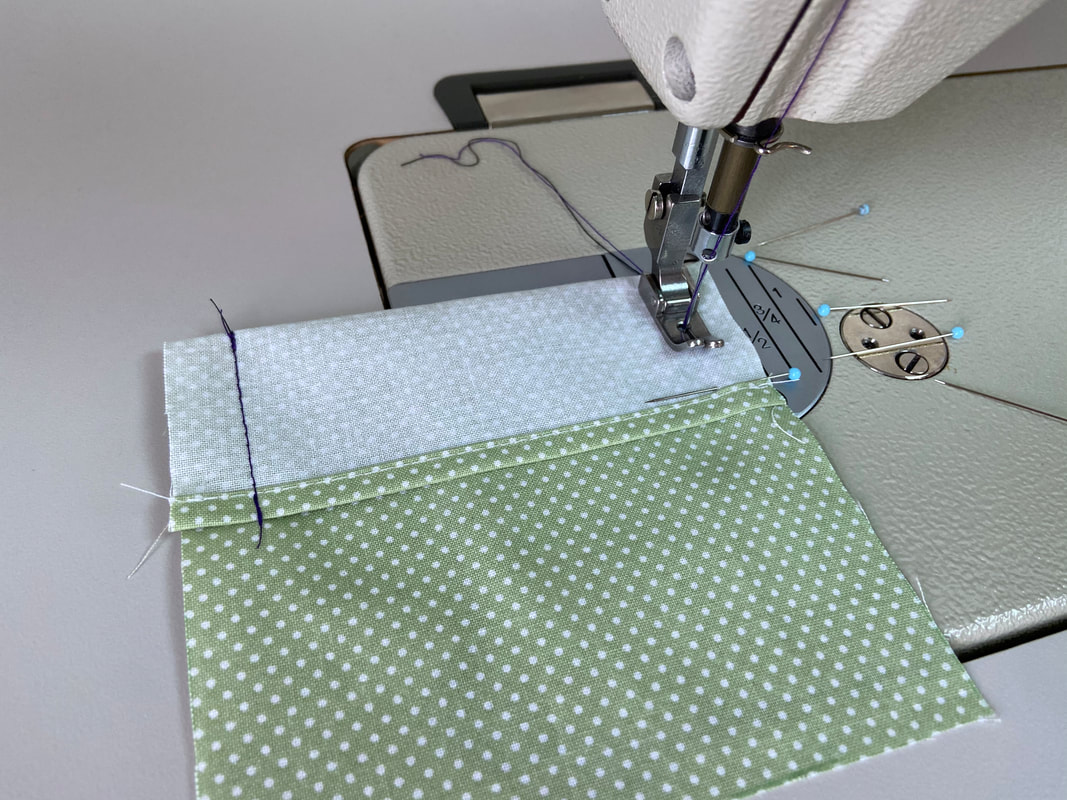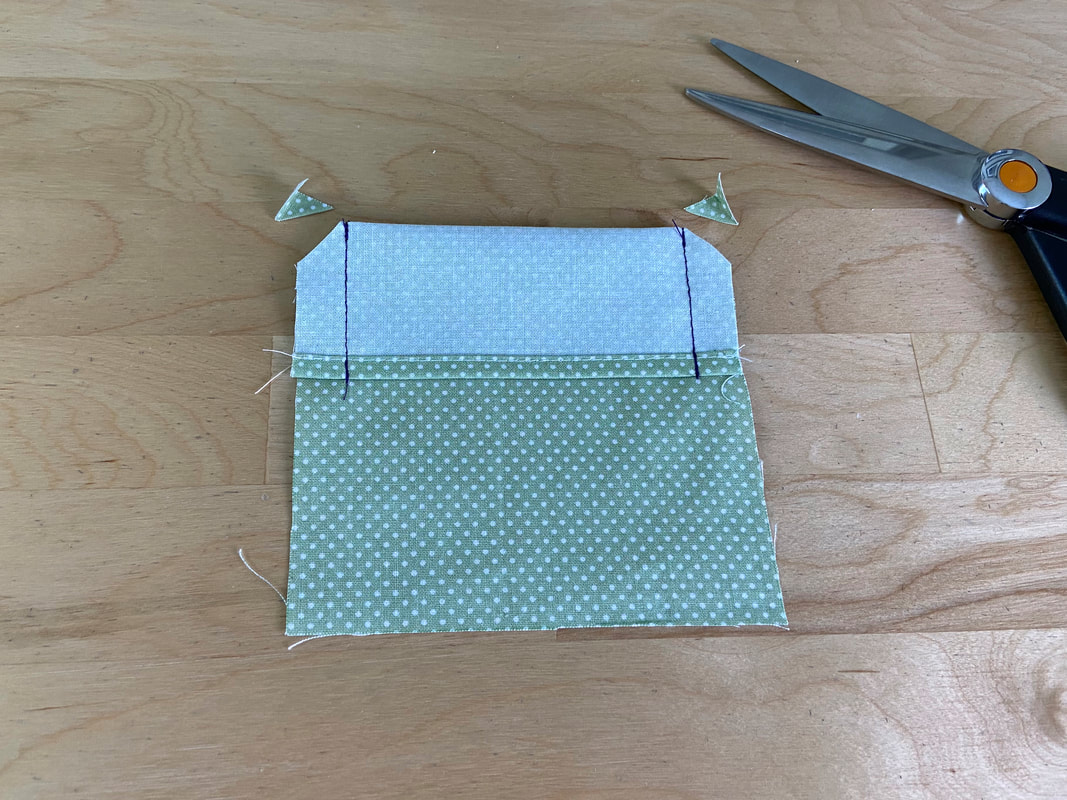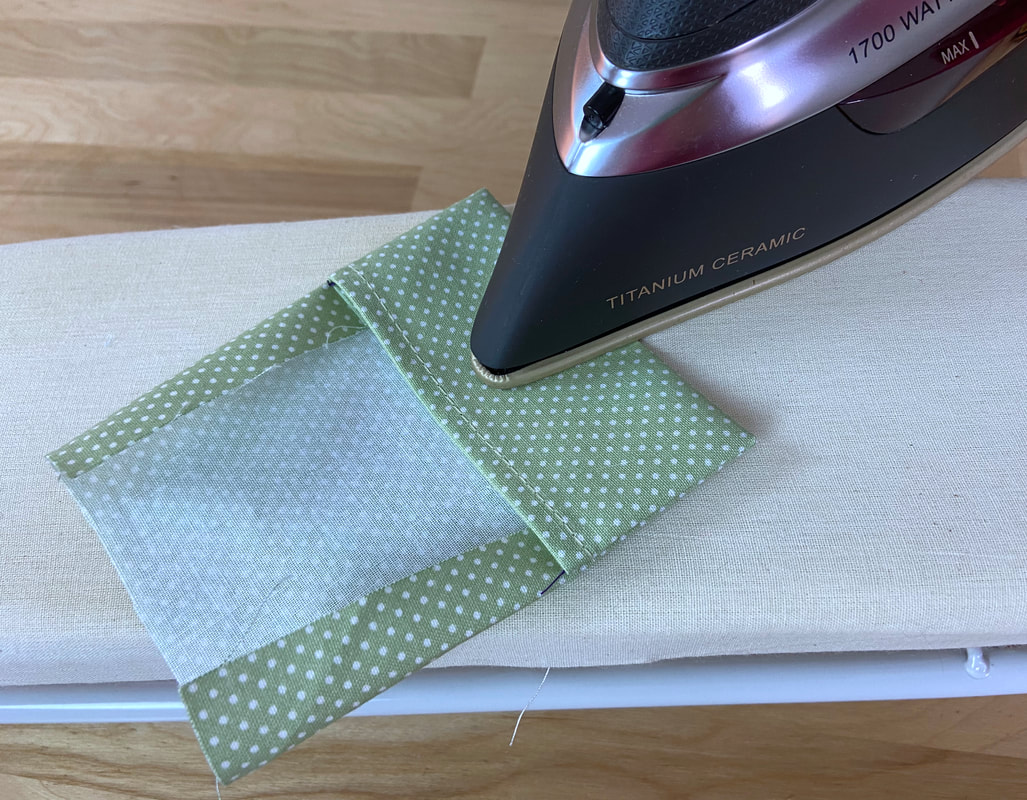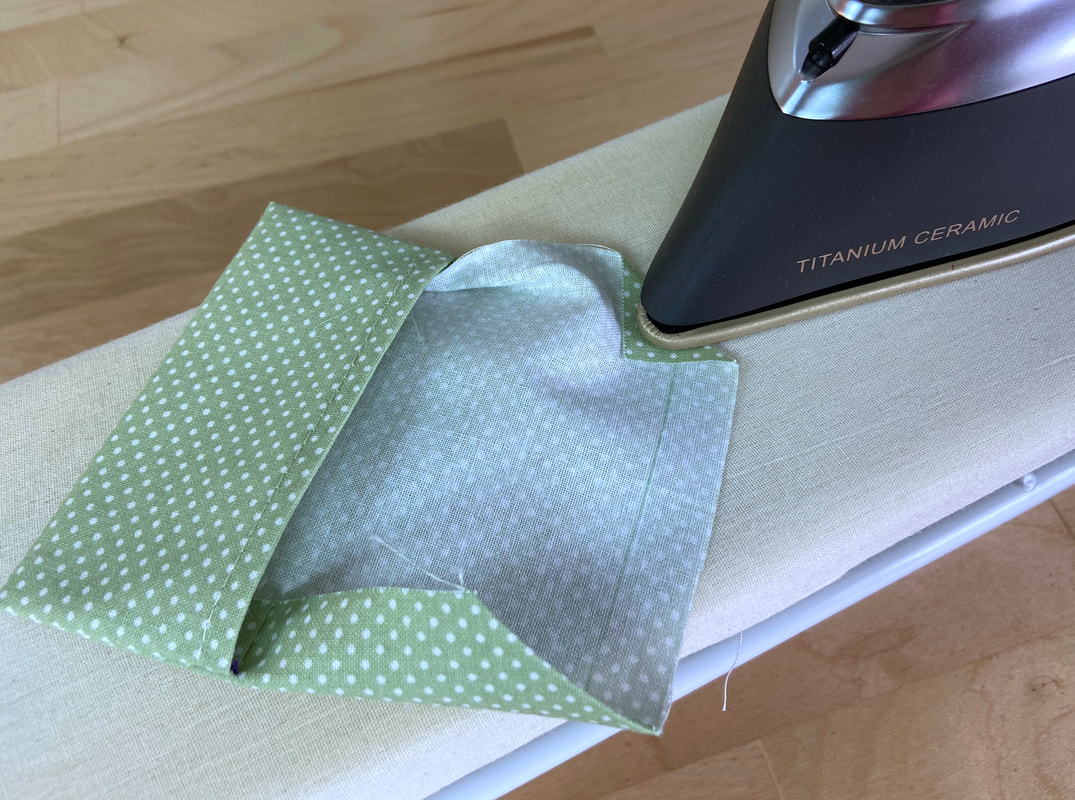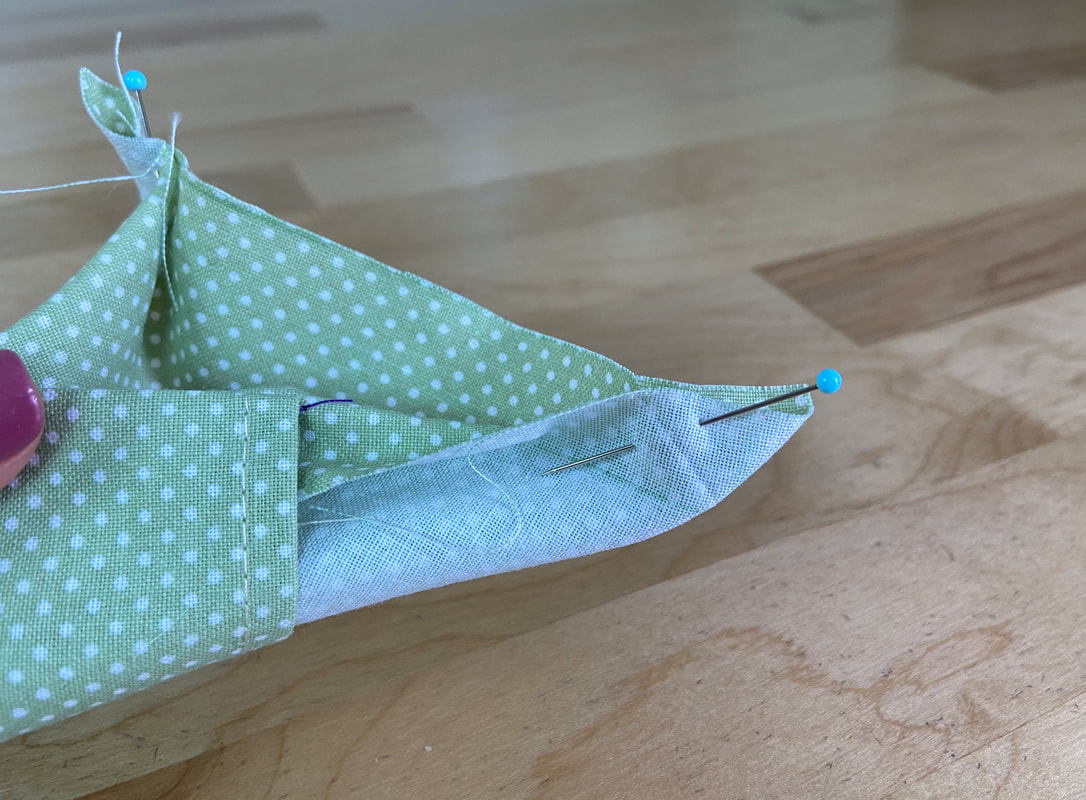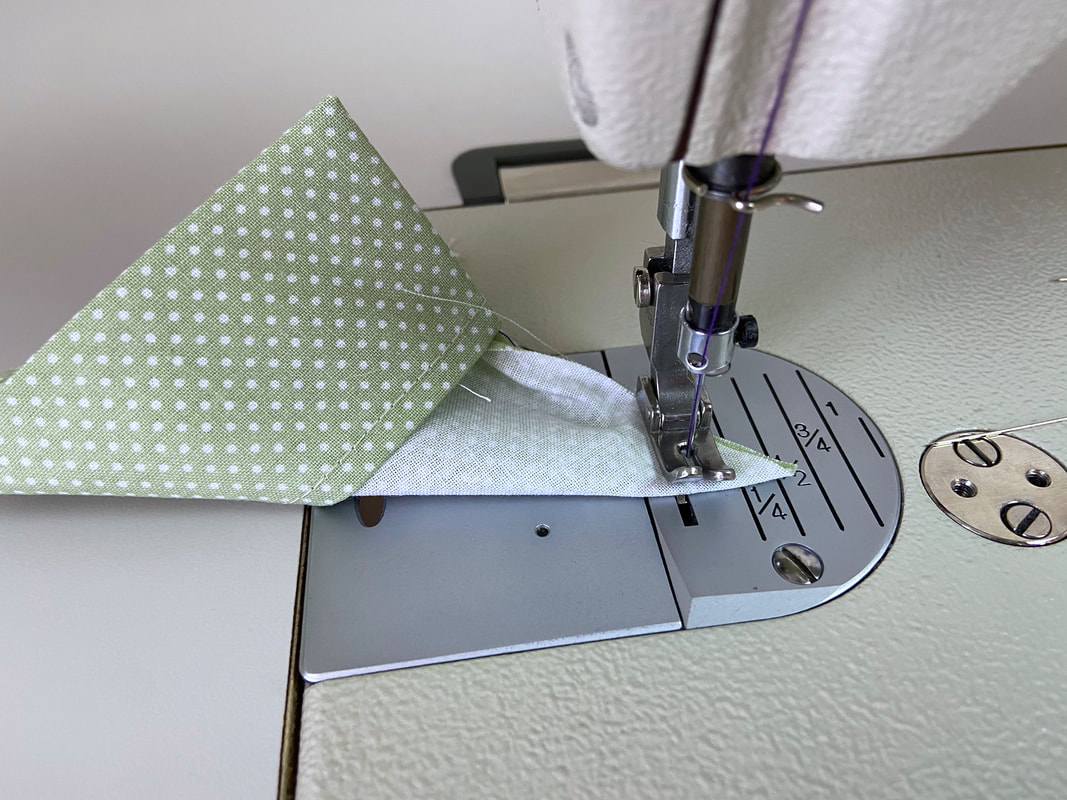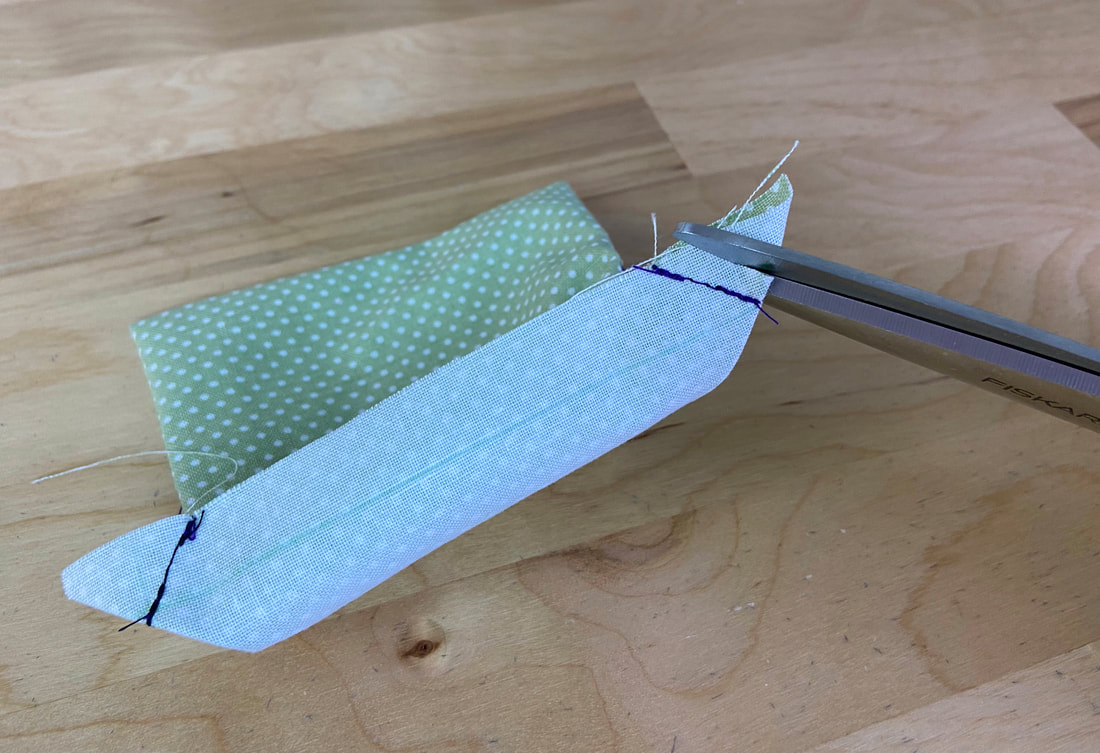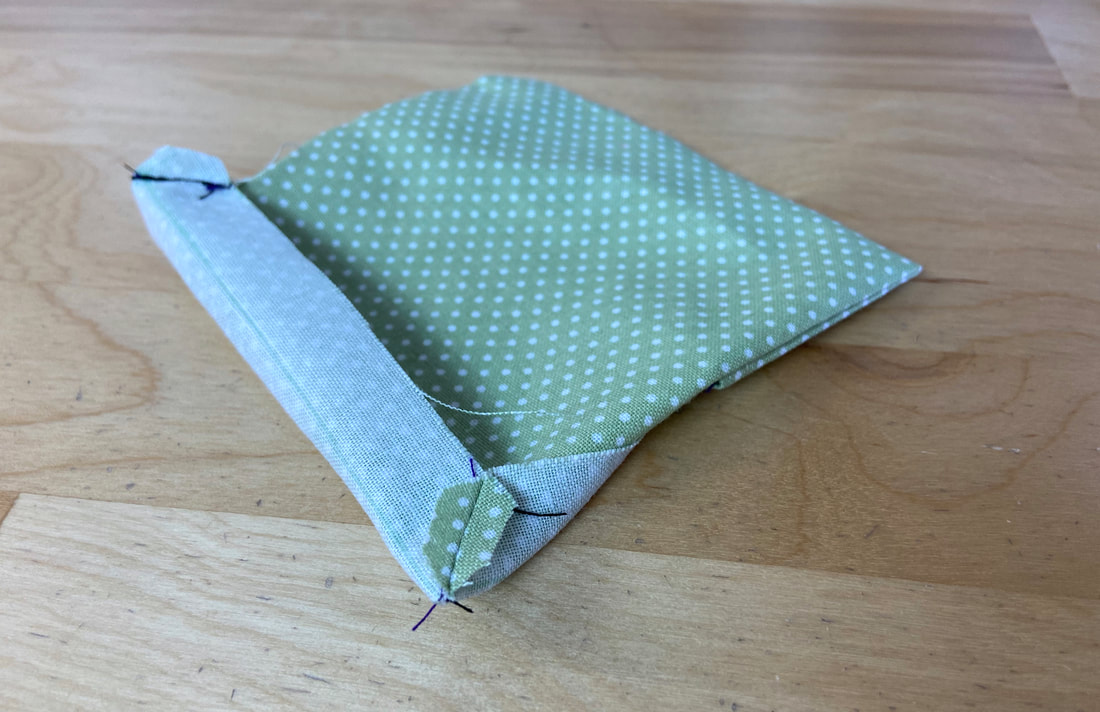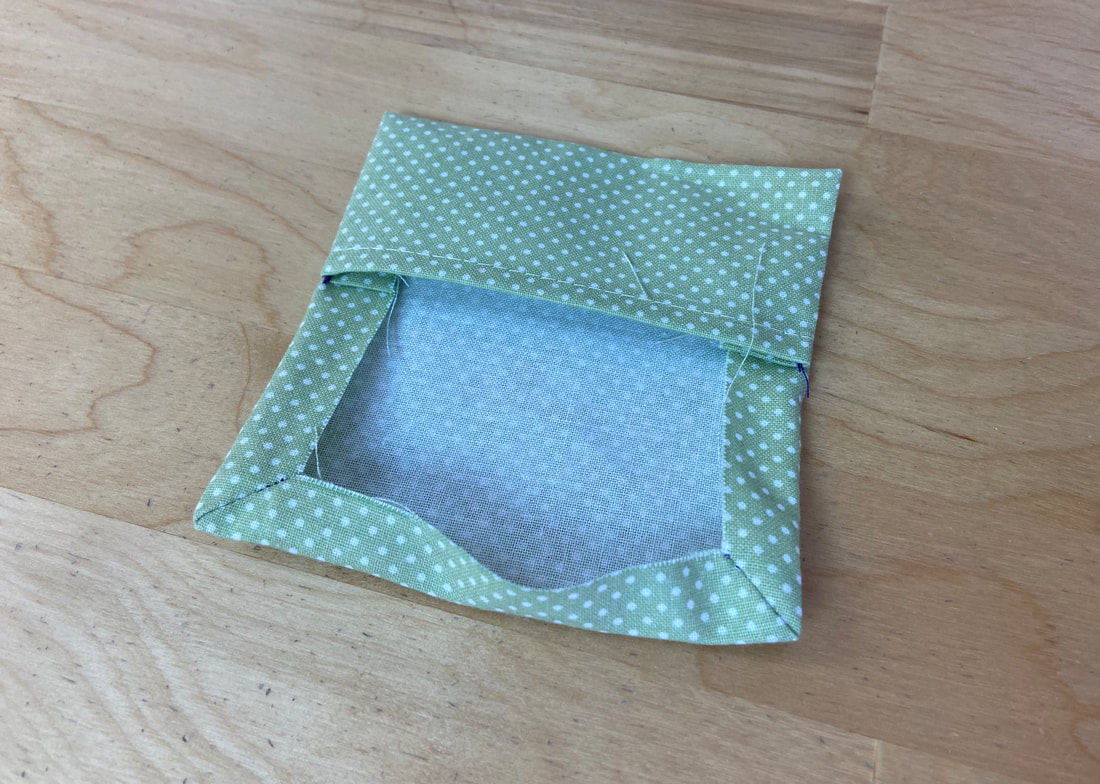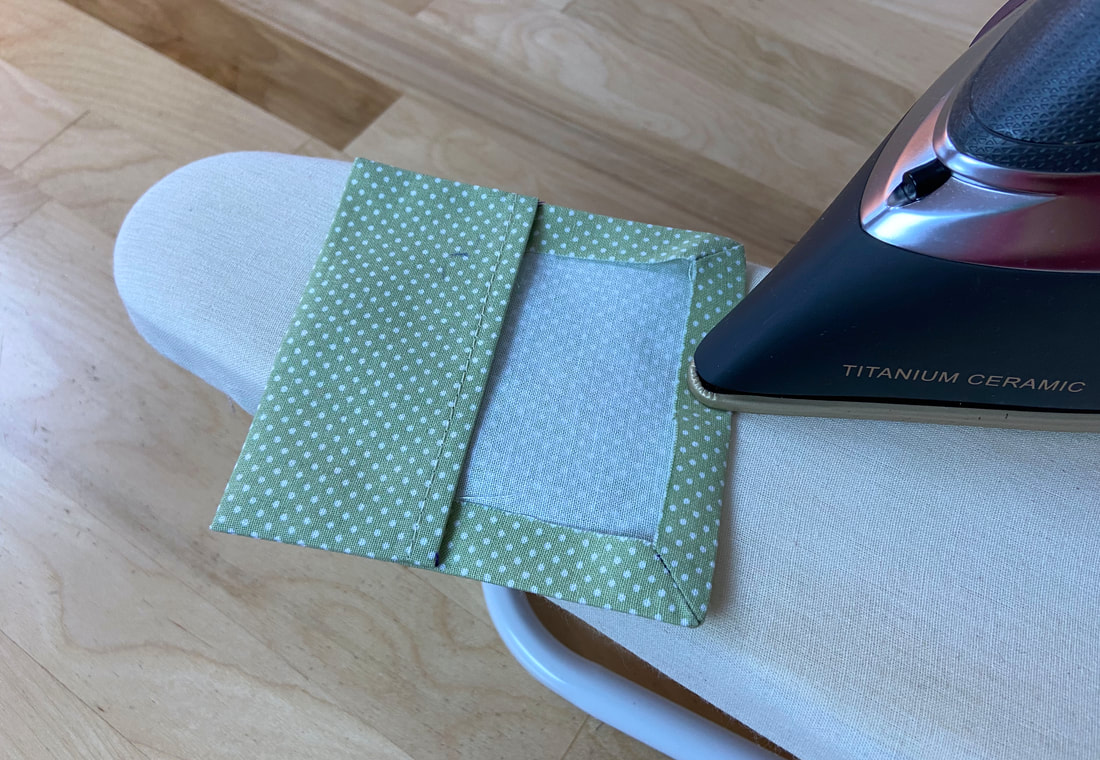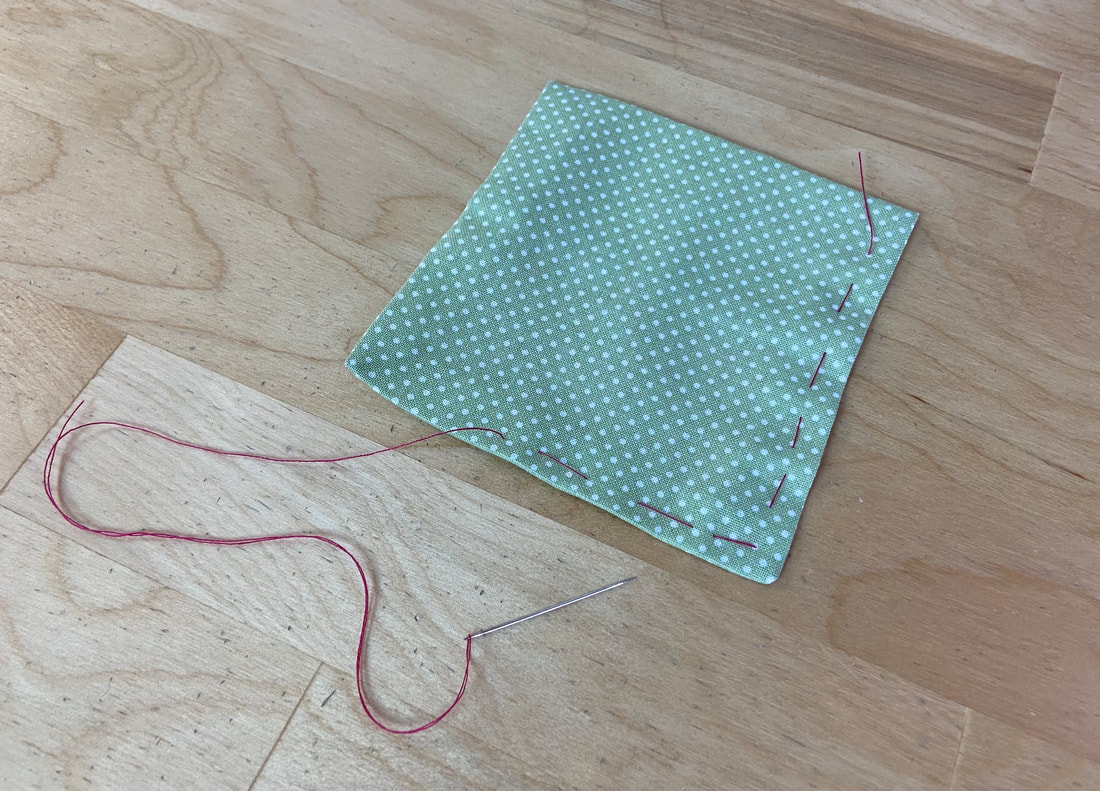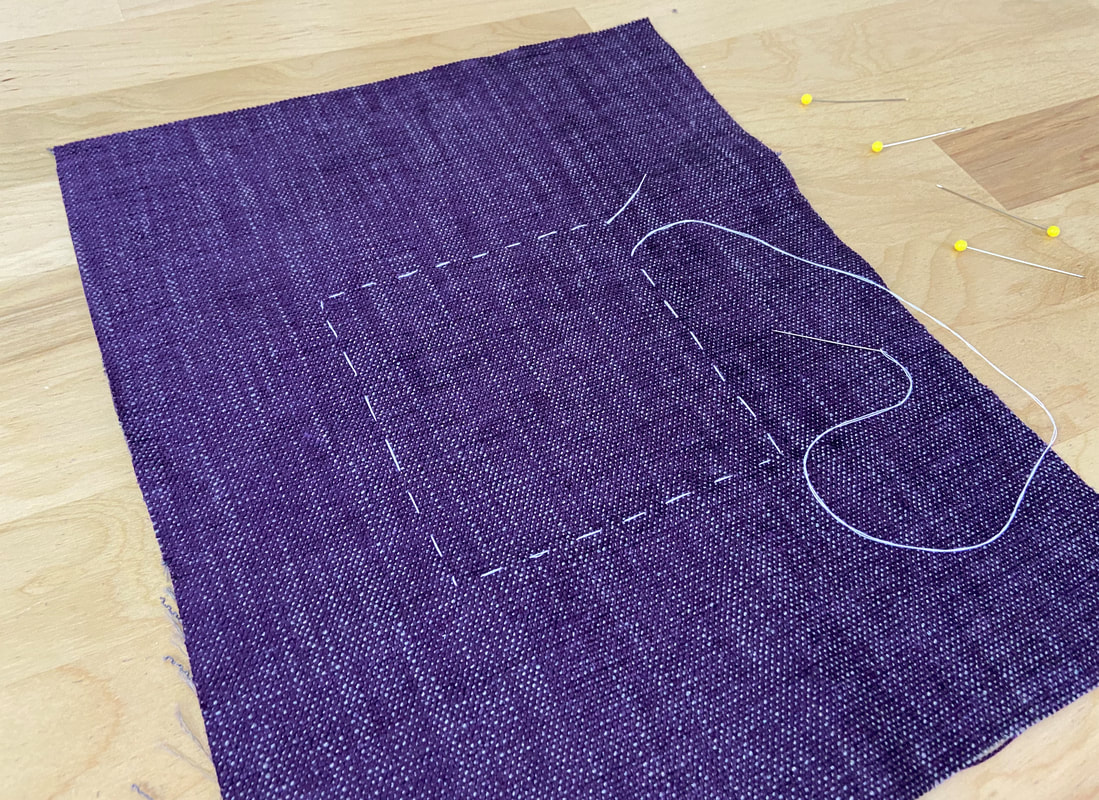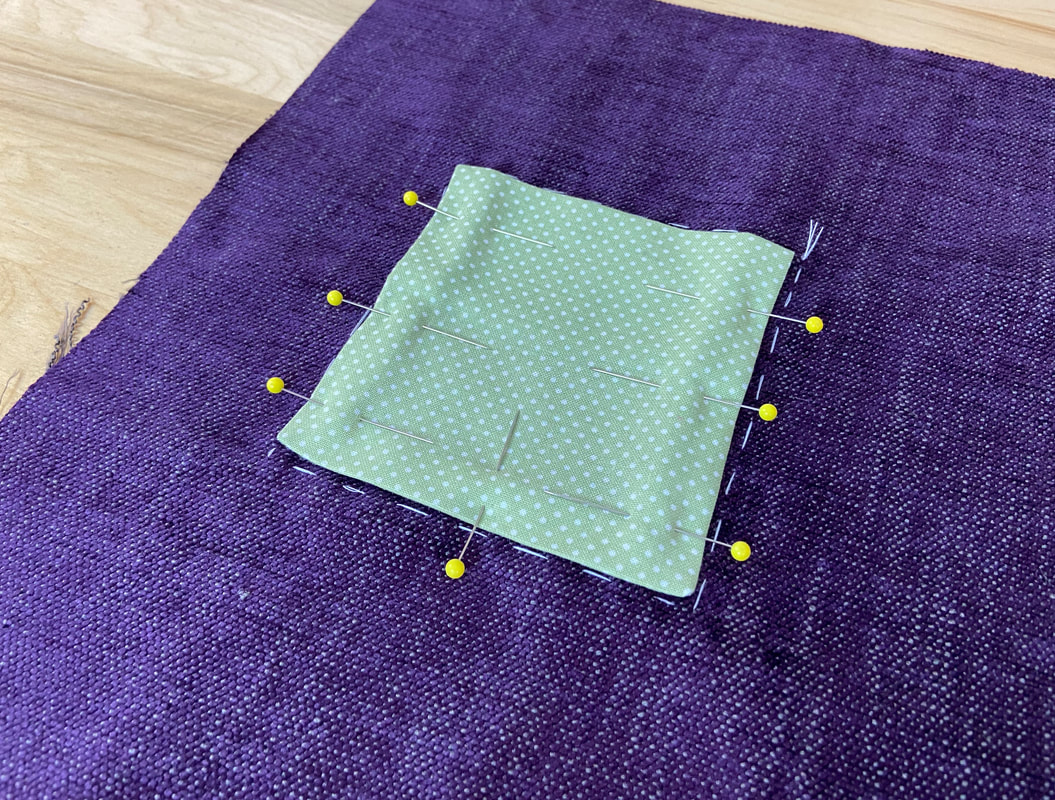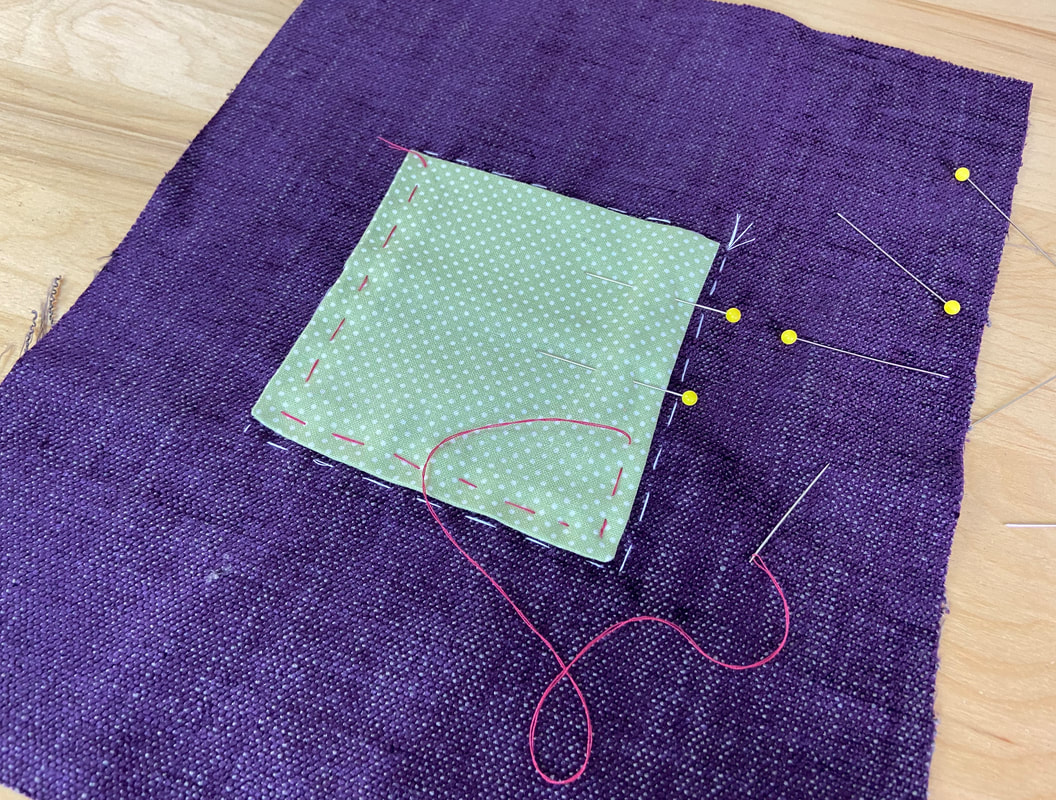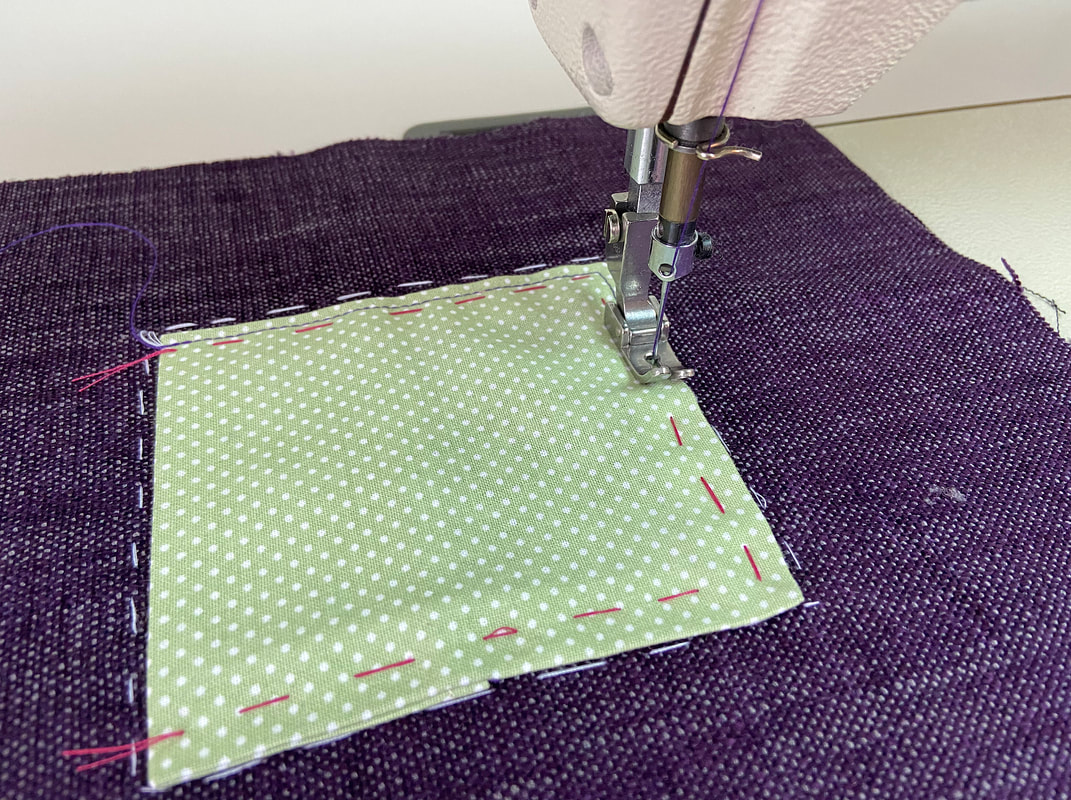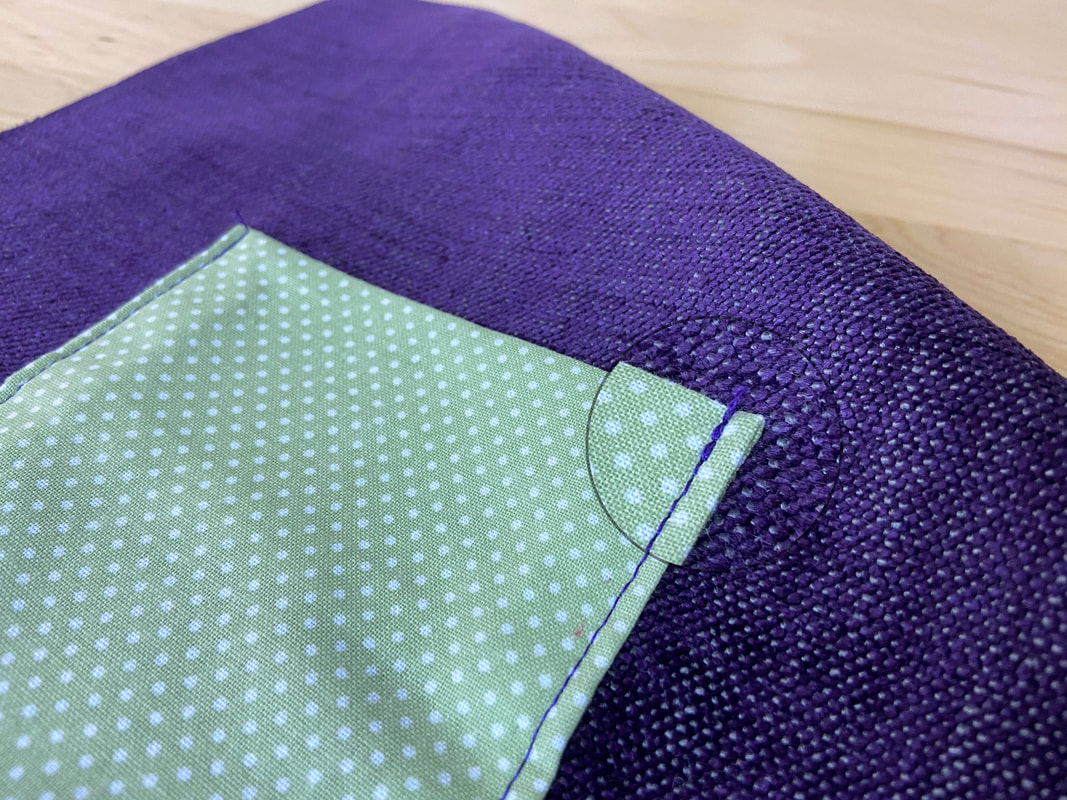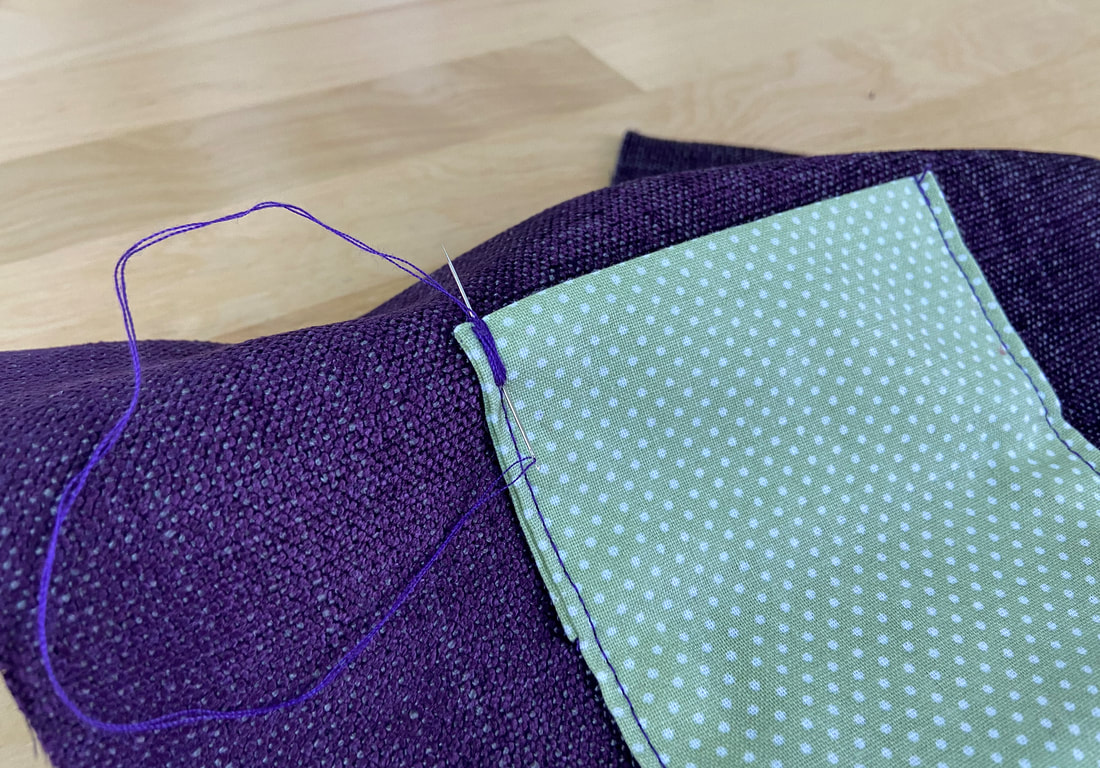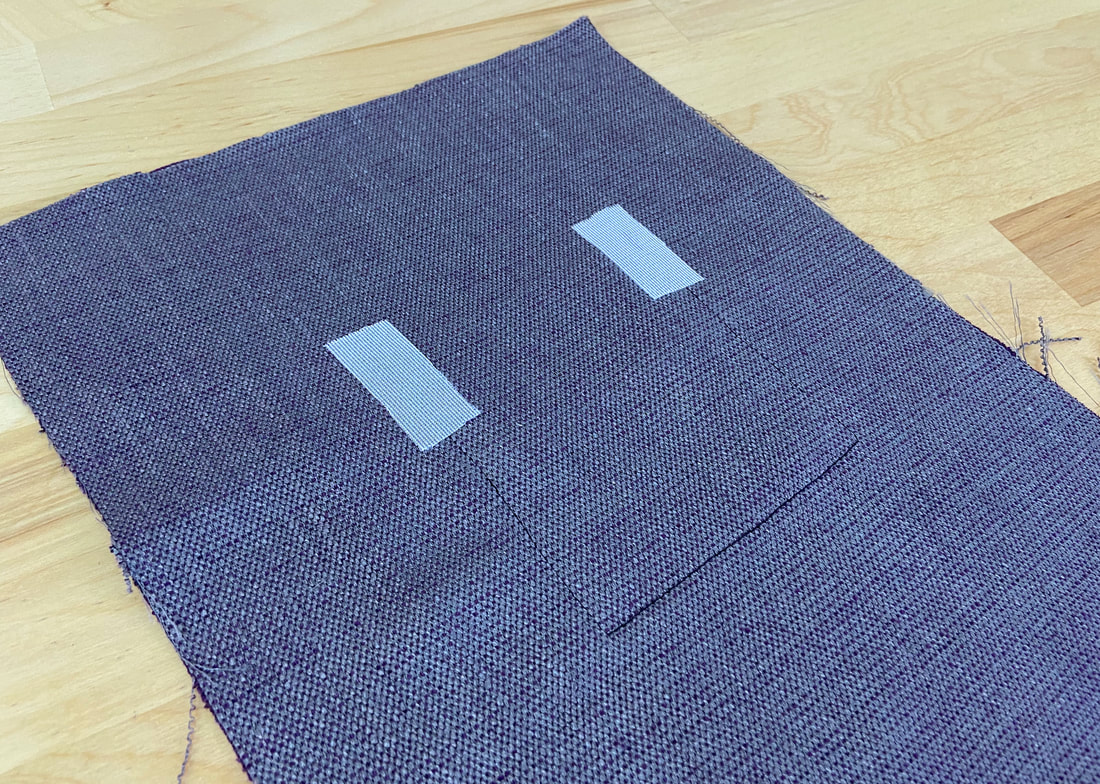A patch pocket is always sewn onto the fabric surface. Patch pockets come in a variety of different shapes and sizes. They can be decoratively finished or feature add-on functional elements like flaps and zippers.
Unlike other pocket styles, a patch pocket bag is not sewn separately but rather formed by its connection with the fabric surface. The layer that is patched onto the fabric surface to form the pocket bag can be either lined or unlined, and have square or curved corners.
In this tutorial, you will learn how to sew the simplest of all styles: an unlined patch pocket with square corners.
Unlined patch pockets are used with casual garments as they provide a less structured finish. Since the fabric’s raw edges are simply folded in toward the inside of the pocket, non-sheer (opaque) fabric should be used to securely hide them underneath.
When sewing any patch pocket application, you should consider not only how to enclose all the fabric’s raw edges but also how to stitch the pocket opening for durability. A few standard techniques are shown below.
With an unlined patch pocket, the pocket layer's bottom and side edges are pre-folded prior to sewing it to the garment.
If the pocket bottom is curved, a technique called easestitching can be used to facilitate the folding process.
To learn how to sew a curved-bottom patch pocket using the easestitching method, check out this tutorial: Curved Patch Pocket With Flap
For a square edge patch pocket like the one shown below, the bottom edges are mitered to achieve a clean, flat application. Mitering prevents the fabric edges from peeking underneath the finished pocket corners.
The patch pocket's top edge, which naturally corresponds to the pocket opening, is treated a bit differently. This edge should not only be durable and highly functional, its raw edges should also be completely secured and enclosed with a little more than just folding.
At the pocket opening, no visible raw edges should be peeking from the sides. Not only does this cause the patch pocket to look unfinished, these edges also tend to unravel and distort the pocket opening.
An easy way to secure the top edge of an unlined patch pocket is with a built-in facing. This facing extension folds onto itself, over the pocket’s opening edges, naturally clean-finishing the patch pocket’s upper portions including the corners.
Measuring, Cutting And Attaching A Square (Unlined) Patch Pocket
1. Start by cutting the patch pocket layer. You can either use a pattern (if you have one) or measure, mark and cut it directly from your fabric.
If cutting your pocket piece from scratch, cut a rectangular shape to measure the desired length of the pocket plus two (2) seam allowances and a 2” extension at the top. In addition, add two (2) seam allowances to the desired width.
In this case, the finished pocket will be 4” x 4”. Thus, the initial fabric cut measures 5” in width (4” plus two ½” seam allowances) and 7” in length. The 7” accounts for two (2) seam allowances of ½” and the 2” extension at the top.
Using a ruler draw the 5” x 7” rectangle directly one the fabric surface as shown.
Carefully cut the rectangular fabric piece along its marked lines.
2. Fold the top edge of the rectangular fabric at ¼” toward its wrong side and iron the fold.
3. Fold again at ¼” to enclose the fabric’s raw edge. Iron as you fold and insert pins to keep the double fold in place for topstitching.
4. From the fabric’s wrong side, topstitch the folded edges using the inner fold as a guide. Once complete, iron the topstitched folded edge.
5. Next, fold the finished top edge at 2” toward the right side of the pocket piece (fabric face side should be touching). The resulting fold will correspond to the patch pocket's top finished edge. Insert pins on both sides of the fold, perpendicular to the edge as shown.
6. Stitch the folded layers at ½” seam allowance on both sides.
7. Trim and grade the seam allowance at each corner, and turn the folded edge on its face side. The stitched sides should result in fully enclosed, clean-finished corners. Iron the pocket’s finished top and side edges.
8. Before sewing the pocket to the garment, both bottom corners should be mitered. Fold the corner diagonally toward the wrong side of the fabric such that the intersection of the horizontal and vertical seamlines falls directly on this diagonal fold. Iron the folded edge as shown.
9. Next, open the folded edge and bring the vertical and horizontal edges together such that the folded crease lines overlap and fabric face sides are touching. Insert a pin to hold.
10. Starting at the widest part, stitch on top of the crease line until you arrive at the fabric fold (corner) as shown.
11. Trim the excess seam allowance and notch the corner.
Iron the corner seam allowance open, and turn the corner back on their right side as shown.
Repeat the mitering process described above on both patch pocket corners.
12. Now that the corners are clean-finished, fold the pocket’s side edges at ½” and iron the fold lines. All folded edges should blend into the mitered corners. Next, fold the bottom edge inwards at ½” and iron again. The bottom folded edge should also blend into the mitered corners in a uniform, straight line.
13. At this point, if your fabric does not iron well, you may need to hand baste all the folded edges to ensure they remain flat during the machine application process.
14. Directly on the garment’s surface, hand baste an outline of the pocket at the exact location and size as the final patch pocket.
15. Align the finished pocket layer with the hand basted outline and insert pins through all layers to secure.
Hand baste the pocket to the garment surface. Basting will hold it perfectly in place during machine stitching.
16. Starting at one of the patch pocket’s top corners, machine stitch as close to the folded edge as you can through both the patch pocket edge and garment layer underneath. As you switch direction, pivot the stitch evenly at each corner. Stitch until you arrive at the other top pocket corner.
17. Once topstitched, remove the temporary hand basting using a seam ripper.
Don’t forget to backstitch both at the beginning and end of your stitch. Since the stitch starts and ends at the pocket opening edge, this area receives a lot of strain during wear/use. Backstitching provides a layer of security.
However, a backstitch is not enough to ensure complete durability. It is standard procedure to add a tack or some form of other reinforcement at each opening corner.
You can use an arrowhead tack, a bar tack, or you can whipstitch through each corner to add an extra layer of strength. In many cases, a simple straight stitch reinforcement adds enough durability to the pocket opening.
In this example, a simple whipstitch is added vertically at each corner.
Although not as strong, another technique is to apply interfacing to the garment’s wrong side at each pocket corner location.
To learn how to apply tacks, follow the steps in this tutorial: Hand-Applied Tack Stitches
To learn more about whipstitching, check out this tutorial: Hand-Applied Overedge Stitches
For info on interfacing, follow this guide: A Complete Guide on Interfacing

